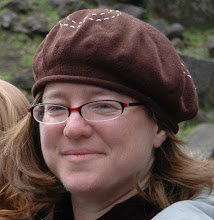Home is Where the Heart is...
 In the Hunts Bay Cemetery in Jamaica, there is a small fragment of a gravestone, belonging to Esther ("De Ester"). The rest of the fragment reads "fil...," probably filha, daughter in Portuguese. The size of the stone and the identification of the deceased as a daughter (rather than wife) suggests this was probably a child's gravestone. What intrigues me most about the fragment, however, is the house inside of the wreath at the top.
In the Hunts Bay Cemetery in Jamaica, there is a small fragment of a gravestone, belonging to Esther ("De Ester"). The rest of the fragment reads "fil...," probably filha, daughter in Portuguese. The size of the stone and the identification of the deceased as a daughter (rather than wife) suggests this was probably a child's gravestone. What intrigues me most about the fragment, however, is the house inside of the wreath at the top.It is unusual to find gravestones with houses carved on them either in the Jewish Atlantic World or in colonial American cemeteries more broadly. On some level this is surprising. In Hebrew, the euphemism for a cemetery is "Beth Haim" (house of life). Also many scholars have noted that the traditional upright markers of colonial cemeteries look like doorways. Usually this is understood as a symbol of the grave as a portal into the afterlife. An actual house is a different matter, though, as it symbolizes the family and protection, not the world to come. Some argue that the house is an inherently feminine space: it is not only the domain of women, but also a place of security and shelter. It interests me that the house also appears on the stone of Esther de la Pena (Amsterdam 1697), a detail of which is shown below.
 This exquisite stone from Beth Haim Ouderkerk features the family coat of arms at the top; below is an inscription and a depiction of the family's country estate shown above with sailing ships in the background. (Esther's husband Daniel was a shipping magnate, and surely it is trade that bought the beautiful estate.) At the very bottom of the stone is a reference: Psalm 128:3 ("Thy wife shall be as a fruitful vine, in the innermost parts of thy house; / thy children like olive plants, round about thy table"). On one level, the country house seems like a status symbol; on another level, however, it is a moving metonym for the deceased wife: she is like the "innermost" part of the house, a private, familial space.
This exquisite stone from Beth Haim Ouderkerk features the family coat of arms at the top; below is an inscription and a depiction of the family's country estate shown above with sailing ships in the background. (Esther's husband Daniel was a shipping magnate, and surely it is trade that bought the beautiful estate.) At the very bottom of the stone is a reference: Psalm 128:3 ("Thy wife shall be as a fruitful vine, in the innermost parts of thy house; / thy children like olive plants, round about thy table"). On one level, the country house seems like a status symbol; on another level, however, it is a moving metonym for the deceased wife: she is like the "innermost" part of the house, a private, familial space.The house motif is more commonly found in American women's poetry than on gravestones; however, here too graves, houses, and women are conjoined. Emily Dickinson made analogies between poems and houses, not only because of the associations of houses with femininity and domesticity, but also because both are about enclosure or restriction. For Dickinson, being in the house was similar to the suffocating "constriction" of a tomb. Literary critic Leslie Wheeler argues that for Dickinson, possessing a body ultimately became so restrictive that death signified a welcome release, and that "the narrowness of the tomb yields a paradoxical freedom" (The Poetics of Enclosure 15). I somehow think this is not what the carvers of these stones meant: Both the Pena house and the house on young Ester's tomb face outward, windows open. The Pena house is surrounded by five vibrant trees (the children?); although it faces away from the bay (mercantile life) towards a more private vista, it hardly looks like a mausoleum. Rather it is a prosperous, sheltering space, reassuring in its solidity.
 Gravestone of Esther de la Pena (Amsterdam 1697), Beth Haim Ouderkerk
Gravestone of Esther de la Pena (Amsterdam 1697), Beth Haim Ouderkerk
All photos by Laura Leibman, 2009-2010.
Posted under:
Amsterdam,
Beth Haim Ouderkerk,
Houses,
Hunts Bay Cemetery,
Jamaica,
JAW,
Jewish Themes,
Women
Dated:
8:09 PM



The other day I did a search for "cemeteries" and "blog" and yours was the first one that popped up. I am so glad it did! Your posts are amazing and I love reading them.
I've never had a chance to visit the cemeteries in New England, but I'm hoping to get there one day. Most of my cemetery knowledge is based in the South, mainly South Carolina and Georgia. It's interesting to read about the stonecarvers, as many of the colonial stones we see in the South were carved in the North.
Anyway, I look forward to reading more of you in the future...keep posting!
Thanks Susannah! There is a brief South/New England connection to my latest post (on the transcolonial gravestone trade). I am looking forward to reading more about Charleston cemeteries!
best,
Laura